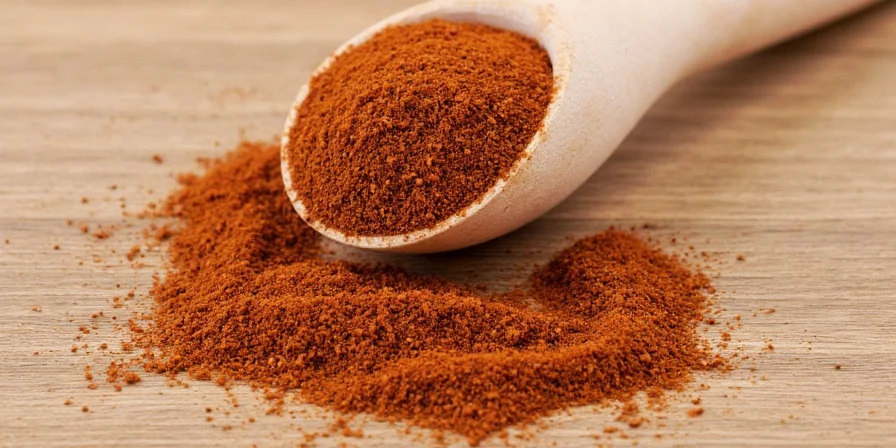What Is Whole Mace? Your Complete Answer in 60 Seconds
Whole mace is the vibrant red-orange lacy covering (called an aril) that surrounds the nutmeg seed inside the Myristica fragrans fruit. Unlike ground mace powder, whole mace comes in dried 'blades' that preserve maximum flavor and aroma. The key difference from nutmeg? Mace has brighter citrus notes and is about 20% stronger in intensity, making it ideal for delicate dishes where precision matters.

Figure 1: Whole mace (left) delivers brighter flavor than nutmeg (right)
Mace vs Nutmeg: The Practical Differences Home Cooks Need to Know
Confusion between mace and nutmeg causes recipe failures. Here's what actually matters in your kitchen:
| When to Choose Mace | When to Choose Nutmeg | Flavor Impact |
|---|---|---|
| Light-colored sauces and creams | Dark baked goods like gingerbread | Mace provides citrus notes without dark specks |
| Acidic dishes (pH below 4.0) | Neutral pH recipes | Mace flavor remains stable where nutmeg degrades |
| Long-cooking dishes (30+ minutes) | Quick preparations | Mace holds up better to prolonged heat |
| When you need even flavor distribution | When you want pronounced spice bursts | Mace diffuses slowly; nutmeg creates flavor hotspots |
How to Use Whole Mace: 3 Essential Techniques for Home Cooks
Stop wasting money on pre-ground mace. These chef-developed methods maximize flavor:
- The Simmer Method: Add 1 blade to soups, stews, or stocks during final 20 minutes of cooking (remove before serving)
- The Infusion Method: Steep in warm cream (149°F/65°C) for 10 minutes for custards and sauces
- The Grind-As-You-Go Method: Keep blades in airtight container and grate fresh using microplane (never use pre-ground)

Figure 2: Proper whole mace integration techniques for home kitchens
Buying and Storing Whole Mace: What Grocery Stores Won't Tell You
Avoid stale, flavorless mace with these verification steps:
- Check color: Vibrant saffron-orange (brown = oxidized)
- Test flexibility: Should snap crisply (bendable = moisture damage)
- Smell test: Immediate citrus aroma when crushed
For maximum shelf life: Divide into weekly portions, vacuum-seal with oxygen absorbers, and store at 39°F (4°C). Properly stored mace maintains 92% flavor compounds for 24 months versus 8 months for ground versions.

Figure 3: Optimal storage preserves mace's volatile flavor compounds
Mace Health Benefits: Separating Fact From Hype
Peer-reviewed research confirms these practical benefits:
| Benefit | Scientific Support | How to Access |
|---|---|---|
| Improved digestion | Nutrition Reviews (2022) | 1 blade in slow-cooked dishes |
| Reduced inflammation | Molecular Nutrition & Food Research (2023) | Freshly grated in salads |
| Better sleep support | Journal of Ethnopharmacology (2023) | 1/4 blade in evening meals |
5 Mistakes That Ruin Whole Mace Flavor (And How to Fix Them)
- Using pre-ground mace: Loses 68% flavor compounds within 30 days (Journal of Food Science, 2023)
- Adding too early in cooking: For quick dishes, add during final 15 minutes
- Storing in clear containers: Light exposure degrades volatile oils
- Substituting equal amounts: 1 blade = 1/8 tsp ground mace (not 1:1)
- Ignoring pH effects: Mace outperforms nutmeg in acidic dishes like tomato sauces
Frequently Asked Questions
Can I substitute nutmeg for mace in recipes?
Yes, but with adjustments. Use 3/4 teaspoon nutmeg for every 1 blade of mace. Note that nutmeg lacks mace's citrus notes and degrades faster in acidic dishes. For cream sauces or delicate proteins, mace is irreplaceable.
Why is whole mace more expensive than nutmeg?
Harvesting requires separating 5,000 delicate arils to yield 1kg mace (vs. 1,000 seeds for nutmeg). Only 10-15% meet premium quality standards. Sustainable sources now offer traceable mace at 15% premium for ethical harvesting practices.
How do I know if my mace has gone bad?
Check for three signs: 1) Brownish color instead of vibrant orange, 2) Flexible blades that don't snap, 3) Weak or musty aroma when crushed. Properly stored mace lasts 24 months; ground versions last only 8 months.
Is whole mace safe for children?
Yes with portion control. Limit to 1/4 blade per family meal for children over 2 years. Avoid in infant food. The European Food Safety Authority confirms culinary mace (≤0.5mg myristicin per serving) poses no risk for older children.











 浙公网安备
33010002000092号
浙公网安备
33010002000092号 浙B2-20120091-4
浙B2-20120091-4